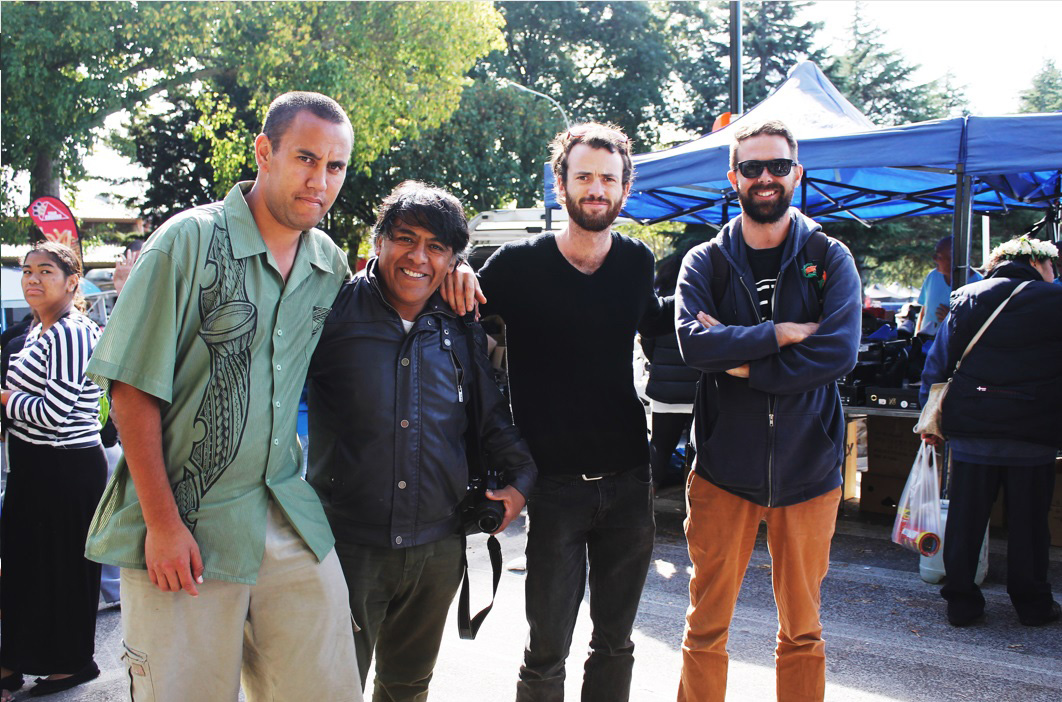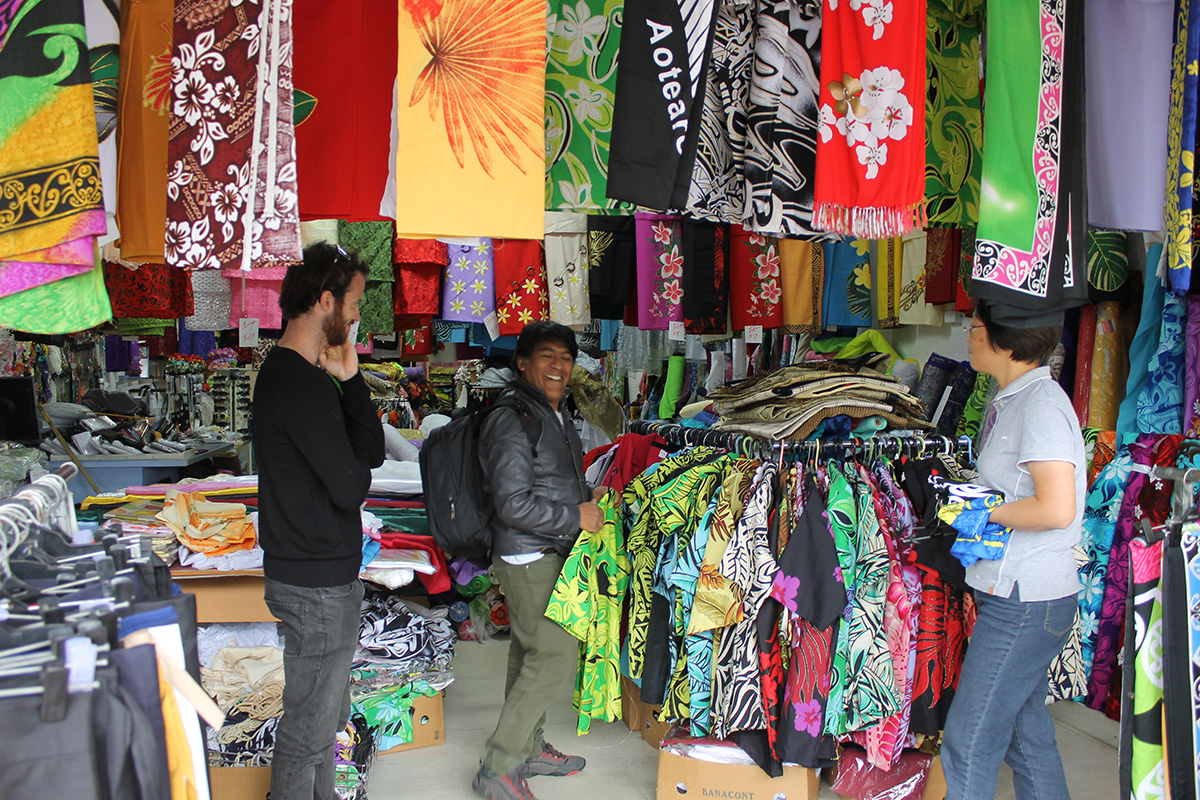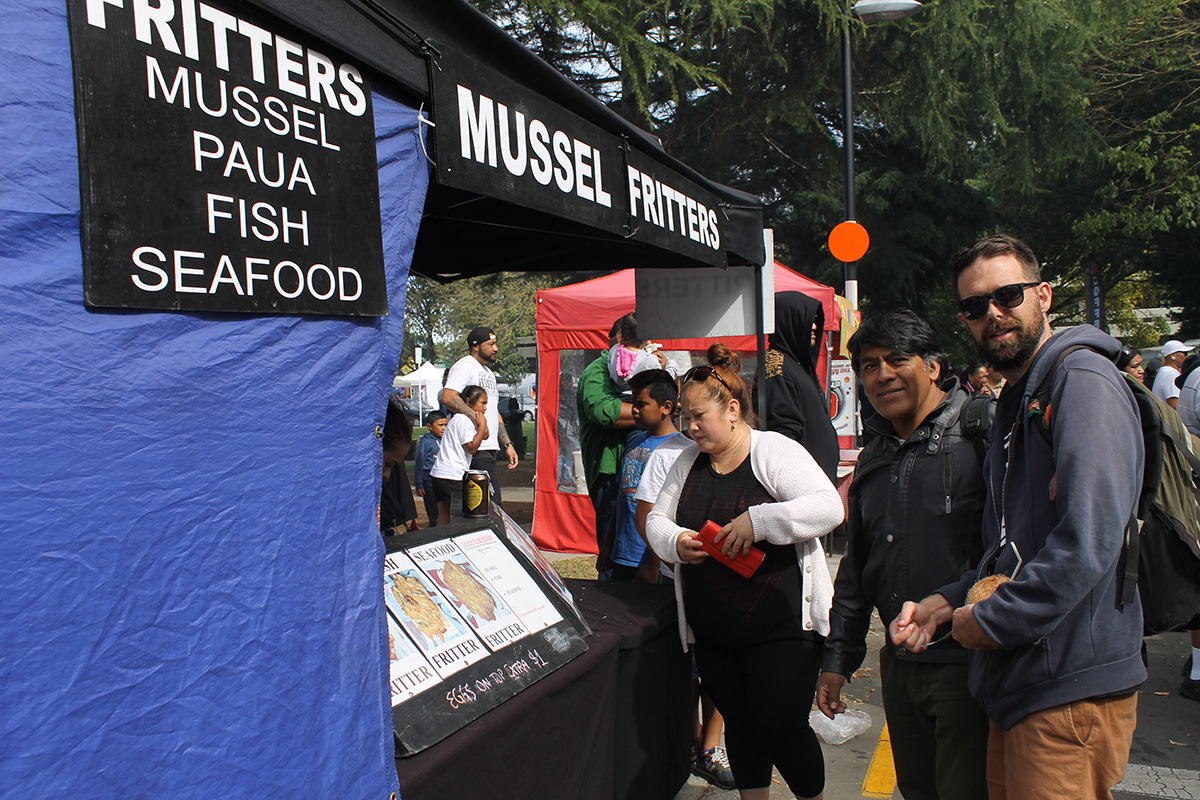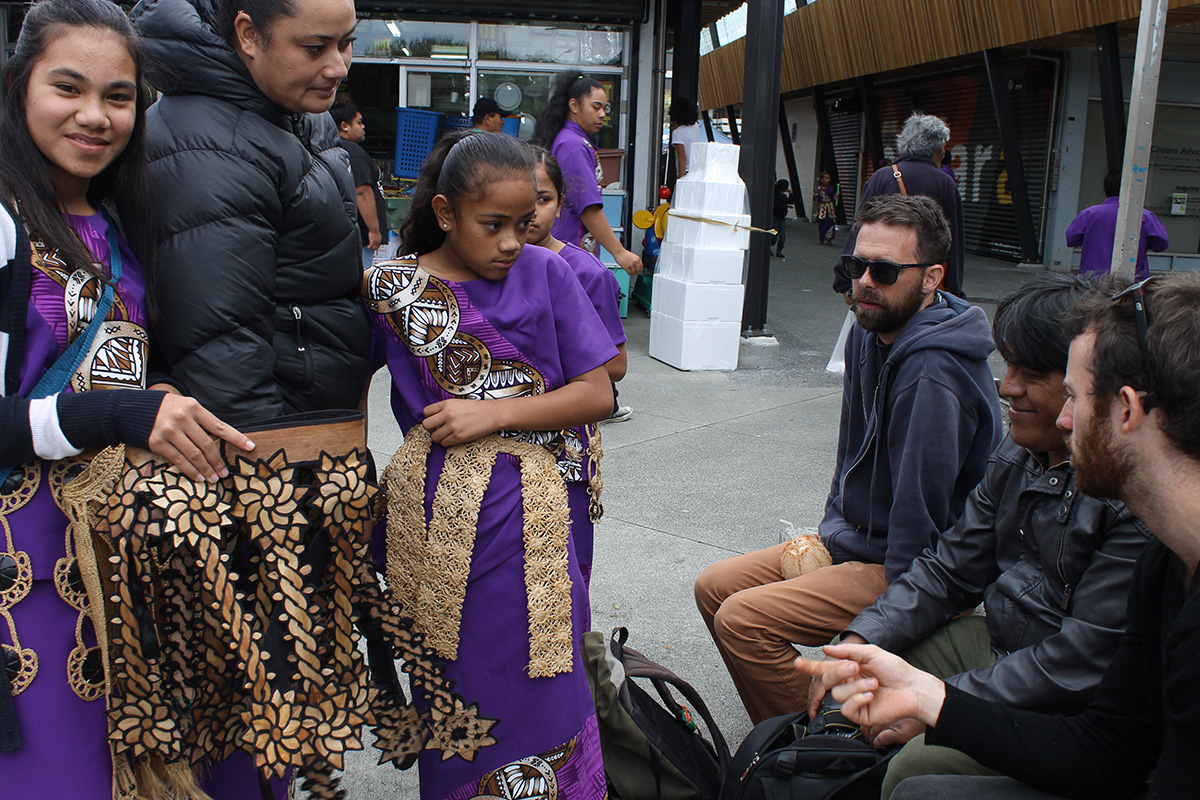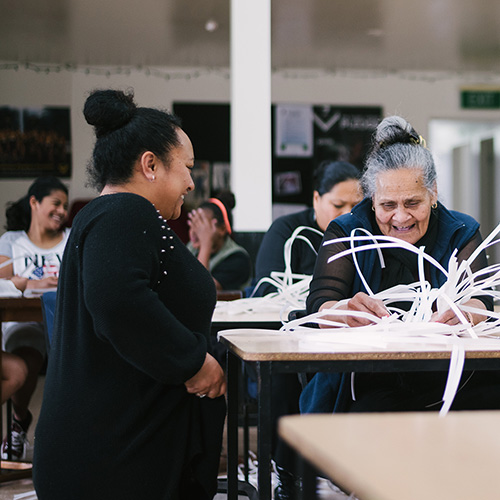‘Let me guess…you’re busy! Welcome to the city – it’s so pretty! Hola to my brother straight outta Chile...’
This is the opening line of an impromptu performance by rapper-busker phenom Tihei Harawira as we enter the Otara fleamarket with visiting artist Bernardo Oyarzún.
Tihei, who is a regular feature most Saturday mornings, remained true to form in accepting the freestyle challenge for a gold coin koha (donation). With ease, he then drops a few lyrical verses about South America in a rhythmic ode backdropped by the vibrant urban-Polynesian flavour synonymous with one of Auckland’s oldest running fleamarkets (established 1977).
Bernardo is a Chilean Mapuche mestizo (mixed-ethnicity) artist from the South of Chile and is currently completing an artist residency with Elam School of Fine Arts at the University of Auckland in partnership with Auckland Art Gallery. He is part of a group of 41 South American artists exhibiting in Space to Dream: Recent Art from South America (7 May – 18 September 2016) and will show his 2014 installation work, Ekeko.
At the fleamarket Bernardo is flanked by our small entourage – myself, artist/interpreter Josh Lotz and Primary Schools Gallery Educator Jackson Vogt, who are supporting an itinerary organised by our Principal Curator Dr Zara Stanhope and Assistant Curator Julia Waite. My role today is unofficial tour guide/chauffeur. I am precariously balancing my Gallery role as Outreach Programmer while traversing into my personal life as an Otara community resident of 45 years. I still reside in the home my parents purchased in 1972 for what now seems like a meagre $22,000.
On the way to the markets, driving along Bairds Road through Otara’s leafy green streets lined with those familiar two-storey 1970s era state houses, Bernardo tells us that this part of Auckland is in stark contrast from where he is temporarily staying in Auckland’s CBD. He walks between the fresh fruit and vegetable stalls, where he is convinced by one stallholder to taste his first coconut, enjoys freshly cooked mussel fritters, visits Evelina's Samoan food shop with stacks of ulu pua’a (roasted pigs head), povi masima (salted beef) and luau (coconut cream in taro leaves), buys a pareau (Pacific printed sarong) with a silver fern to take back to Chile and meets Pacific artist, independent curator and weekend gallery co-ordinator Reina Sutton at Fresh Gallery Otara. Fresh is well known for being an artistic hub that has exhibited the work of many reknowned Pacific contemporary artists in Auckland.
